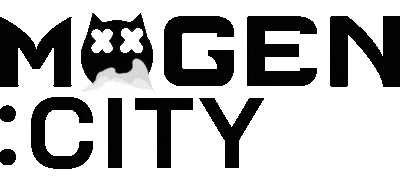Introduction: The NFT Boom Was Just the Beginning
When Beeple’s digital collage sold for $69 million in 2021, the mainstream art world collectively lost its mind — and for a moment, NFTs were everywhere. Celebrities launched collections, brands jumped on board, and the phrase “right-click-save” became a meme. But beneath the gold rush was a more revolutionary shift, especially for Gen Z artists: the dawn of a decentralized art economy powered by blockchain technology and driven by digital-native creators.
Now that the hype has cooled, a new ecosystem is taking shape — one that empowers emerging artists to bypass gatekeepers, connect directly with collectors, and build global communities around their work. In this new era, Gen Z isn’t just creating digital art — they’re rewriting the rules of the art market itself.
1. Why NFTs Matter for Gen Z Artists
Gen Z is the first generation to grow up entirely online. For them, identity, expression, and ownership have always had a digital component. Here’s why NFTs are so powerful for this demographic:
- True Digital Ownership: NFTs allow artists to prove ownership and originality of digital files, ending decades of “copy-paste” dilemmas.
- Direct Monetization: Platforms like Foundation, SuperRare, and Zora let artists sell directly to collectors — no galleries, no agents.
- Royalties on Resales: Smart contracts let creators earn a cut every time their work is resold, flipping the script on the traditional secondary art market.
- Global Reach: Young artists from Lagos to Manila can instantly access collectors from New York to Tokyo.
The result? A new class of artists who are internet-native, entrepreneurial, and totally uninterested in begging for validation from legacy institutions.
2. From JPEGs to Cultural Movements
For Gen Z, NFTs are more than just assets — they’re social symbols, community tokens, and cultural statements. Entire scenes have sprung up around them:
- CryptoArt: Stylized, meme-laced visual art sold on curated platforms.
- PFP (Profile Picture) Projects: Collectibles like CryptoPunks and Bored Apes, used as avatars, identity flags, and membership passes.
- 1-of-1 Digital Fine Art: High-effort pieces by individual creators, often accompanied by deeply personal storytelling.
These aren’t just pictures — they’re cultural artifacts, often tied to DAOs, Discord servers, or real-world meetups. The line between collector and fan is blurring, and art is becoming inherently social.
3. Gen Z Creators Who Are Shaping the Scene
Let’s spotlight a few Gen Z and young millennial artists who’ve risen through this ecosystem:
- FEWOCiOUS (Victor Langlois): A trans teen artist whose expressive, emotion-drenched work has earned over $50 million in NFT sales. He’s collaborated with RTFKT Studios and auctioned works at Christie’s.
- Andre O’Shea: A 3D motion artist blending Afrofuturism and surrealism. He uses NFTs to fund personal projects and cultural storytelling.
- Nyla Hayes: The 14-year-old creator of the “Long Neckie Ladies” collection — over $4 million in sales before she could legally vote.
These artists represent a paradigm shift: They’re not waiting for approval from galleries or critics. They’re leveraging decentralized platforms, crypto tools, and online fandoms to scale their art careers globally.
4. Decentralization Means Dismantling the Old Art World
The traditional art world is notoriously exclusive. Getting a gallery show requires connections, wealth, and usually proximity to urban art capitals. NFTs blow that model wide open:
- No Need for Physical Spaces: Digital galleries and virtual exhibitions remove location barriers.
- Tokenized Governance: Some communities let artists and collectors vote on curation using tokens.
- Inclusive Platforms: Emerging artists from underrepresented communities can break through purely based on merit and community support.
This flattening of access is essential for Gen Z, who value equity, transparency, and the ability to build their own tables instead of asking for a seat.
5. Communities First, Sales Second
One major difference in how Gen Z approaches NFTs: they lead with community, not commerce.
- Artists host live mints, AMA sessions, or even co-create with fans.
- Projects like World of Women, Deadfellaz, or Pussy Riot’s UnicornDAO blend activism, art, and community governance.
- Many artists build dedicated Discord servers or Telegram groups where collectors get sneak peeks, input on upcoming drops, or even exclusive merch.
This makes buying art feel more like joining a movement — a stark contrast to the gallery world’s cold transactional vibe.
6. The Tools Gen Z Uses to Navigate the Space
Gen Z artists are incredibly resourceful and technically savvy. Here are some tools and platforms they lean on:
- Minting Platforms: Zora, Manifold, Foundation, SuperRare, OpenSea
- Wallets: MetaMask, Rainbow
- Community Platforms: Discord, Twitter, Lens Protocol
- Marketing Tools: Mirror.xyz for blog posts, Paragraph.xyz for token-gated newsletters
- DAOs: Platforms like Juicebox or Aragon to create community-led funding and governance
Many of them are building entire art brands from their bedrooms — complete with social strategy, tokenomics, merch, and cross-platform engagement.
7. The New Economics of Art: Creator-Owned Markets
The old art world operates on opacity — secret pricing, hush-hush deals, and power brokers behind closed doors. The NFT space flips that:
- Every sale is transparent on-chain.
- Royalties are automatic, not begged for.
- Collectors are public, creating built-in provenance.
This data-driven approach means Gen Z artists can track trends, optimize pricing, and even A/B test drops like digital marketers. It’s the gamification of fine art, with creators holding the joystick.
8. Critics and Challenges
Of course, the decentralized art market isn’t all rainbows and Ethereum.
- Environmental Concerns: Proof-of-work blockchains like Ethereum (pre-merge) were criticized for high energy use, though many have since transitioned to proof-of-stake.
- Scams & Grifts: The NFT gold rush led to countless rug pulls and copycat collections.
- Market Volatility: Prices can swing wildly. Some artists made millions; others earned pennies.
- Tech Barriers: Setting up wallets, managing gas fees, and avoiding phishing scams is still a learning curve.
That said, Gen Z is adaptable. They treat these risks the way early YouTubers treated demonetization — not as deterrents, but as challenges to hack and overcome.
9. What’s Next for Gen Z and NFT Art?
The NFT space is maturing. Here’s where we’re headed:
- Cross-chain art platforms that let artists mint on multiple blockchains (Ethereum, Tezos, Solana) with ease.
- On-chain generative art, where the code itself is the art (e.g., Art Blocks).
- Virtual art worlds and metaverse exhibitions, with interoperable NFT galleries.
- Creator-run DAOs that fund, curate, and promote emerging artists.
Most importantly, we’ll see a shift from speculative buying to patronage — where collectors support artists they believe in, not just projects they hope to flip.
10. Conclusion: A Revolution in Pixels and Power
The NFT hype cycle may be over, but the revolution it sparked is just beginning. For Gen Z artists, the blockchain isn’t just a tech platform — it’s a medium, a market, and a movement.
They’re not just changing how art is bought and sold. They’re changing who gets to be called an artist, how communities form around creativity, and what it means to truly own your work in the digital age.
This isn’t about JPEGs. It’s about power.
And Gen Z? They’re just getting started.
Beyond the NFT Hype: Gen Z Digital Artists and the New Decentralized Art Market
The content, Beyond the NFT Hype: Gen Z Digital Artists and the New Decentralized Art Market, published on Mugen:City is for informational and entertainment purposes only.
We do not offer financial advice, investment recommendations, or trading strategies.
Cryptocurrencies, NFTs, and related assets are highly volatile and risky — always DYOR (do your own research) and consult with a professional advisor before making any financial decisions.
Mugen:City, its writers, and affiliates are not responsible for any losses, damages, or financial consequences resulting from your actions.
You are fully responsible for your own moves in the degen world. Stay sharp, stay rebellious.





